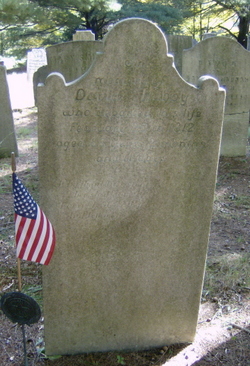David HOBBY
SAR Patriot #:
P-182613
The following information was assembled from numerous sources and cannot be used directly as proof of Qualifying Service or Lineage.
It is considered a research aid and is intended to assist in locating sources that can be used as proof.
State of Service: NY
Qualifying Service: Colonel / Patriotic Service
DAR #: A055988
Birth: 18 Dec 1743 Greenwich / Westchester / NY
Death: 27 Feb 1812 North Castle / Westchester / NY
Qualifying Service Description:
- Prisoner of war
- Colonel, commanding, 2nd, New York Regiment
- Lieutenant, Captain, Major, 3rd Regiments, New York
Additional References:
- History of North Castle
- "Ye History of Greenwich", pg 559, (Hobby Family)
- Heitman, Francis B, Officers of the Continetal Army, pg 293
- Grave Registry form. National Society Sons of the American Revolution (SAR)
- Lee, Frances Cook, North Castle/New Castle, Historical Records: Colonial History & Minutes of Town Meetings, 1736-1791, Pub. Town of New Castle, 1975
Spouse: Sarah Knapp
Children: David Jr; Sarah;
Members Who Share This Ancestor
| Date Approved | Society | ACN | SAR Member Info | Lineage via Child | View Application Detail | |
|---|---|---|---|---|---|---|
| 1956-12-31 | NY | Unassigned | Allen Homer Fitch III (81383) | Sarah | ||
| 1994-05-18 | AZ | 208693 | Clifford Kenneth Platt II (142504) | David | ||
| 1995-11-14 | VA | 205271 | Robert Earl Platt Sr (145452) | David | ||
| 1995-11-14 | AZ | 205272 | George Russell Platt (145453) | David | ||
| 2000-07-03 | AZ | 7005 | Daniel Winter Spahr (154110) | David | ||
| 2002-05-13 | AZ | 13257 | Clifford Kenneth Platt III (158110) | David | ||
| 2003-03-10 | AZ | 15200 | Charles Laurence Spahr (159679) | David | ||
| 2011-06-08 | AZ | 42623 | Alan Douglass Fitch Jr. (178362) | Sarah |
Location:
Bedford / Westchester / NY / USA
Find A Grave Cemetery #:
Marker Type:
SAR,Upright, architectural top, gray stone, worn
SAR Grave Dedication Date:
bef 01 Mar 2011
Comments:
Image provided with permission from Pat, Find-a-Grave Member # 46871295
Directions to Cemetery / Gravesite:
From JFK Airport:
Get on I-678 N from 130th Place. Follow I-678 N, Hutchinson River Pkwy N and I-684 N to Armonk. Take exit 3N from I-684 North.Continue on NY-22 N/Armonk Bedford Road/Bedford Road. Take Banksville Road and Round Hill Road to Middle Patent Road
